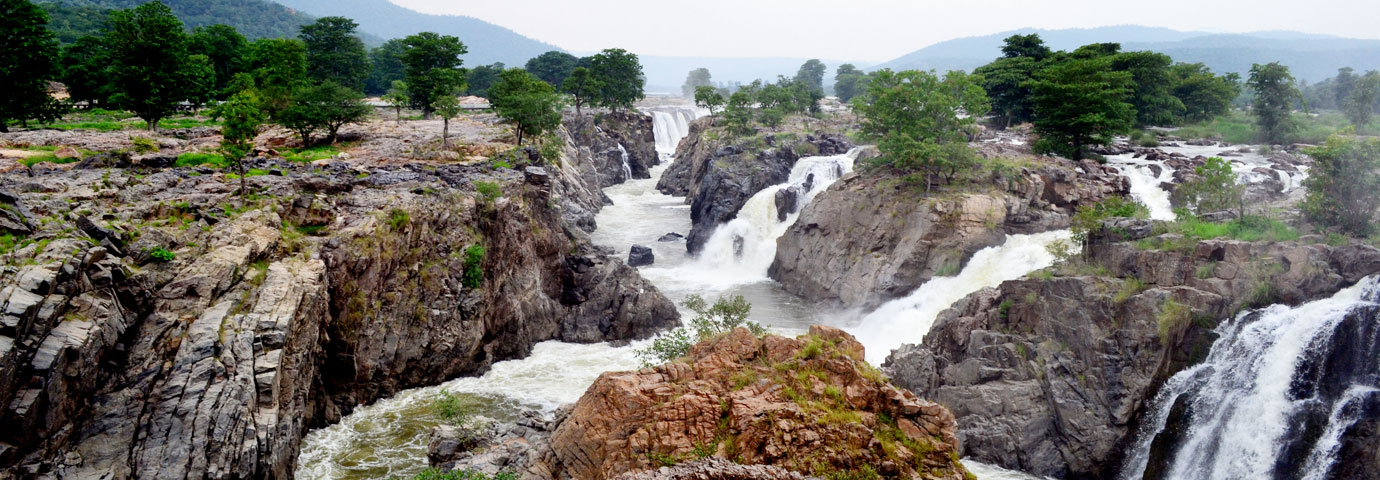Tourists Attractions
The 15 km descent from Pennagaram to Hogenakkal snakes through very interesting terrain. In these lands, one can see villages with lush fields of mulberry, fodder for busy silkworms, and the broad-leaved though often scraggy castor. On the outskirts of the rural settlements en route are their fascinating guardian deities, often referred to as Aiyanars. Made of terracotta or plastered brick, these giant figures are brightly colored and generally depict fearsome and mustachioed warriors. But exceptions to this excessively macho rule are also seen at some places.
As the scrub-covered slopes give way to thickets of thorny vegetation and then, almost imperceptibly, when tall trees began to rise, the air reverberates, with the soft roar of running water becoming more and more assertive as one reaches lower and lower.
At the bottom of the valley, the Cauvery tributaries spread in a blue and shimmering web. They gurgle, shimmer, some hardly more than exposed rocks, and large rocky stretches where old trees grew. Women in bright saris bathe, or wash clothes in the running water.
The spa-hamlet rises off the road-a scatter of shacks and buildings, staggering up the slopes of the valley, gazing down at the water-woods on the other side of the road. It has the character of a village struggling to become a town, a little tatty in patches, not yet chrome glass-and-polish, still retaining much of its truly rural charm.
Often referred to as basket-boats, the circular vessels called Coracles have bamboo frames covered in either black plastic or buffalo hide. They wait like black mushrooms, propped against trees or upturned on the banks of the river. When the river is in spate, all the dark rocks are submerged, but if one goes there in February, which is among the most favored months to visit this riverine spa, there should not be any problem. Coracles are among the oldest types of watercraft in the world, and among the most successful-a reassuring thought when one is floating in these saucer-like devices.


